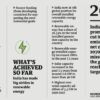The development of a new medication is an incredibly complex process. From laboratory research, to testing for safety and efficacy, to setting up manufacturing and obtaining regulatory approval, the process can take up to a decade—and that’s only for one pharmaceutical product. Coordinating such long and complicated processes both to ensure that they are the most resource-efficient and to guarantee that the development process proceeds without delays is the difficult job of research and development schedulers.
Balancing the priorities of hundreds of researchers scheduled out for years across multiple projects can be a huge challenge. That’s why Chrysanthos Gounaris, associate professor of chemical engineering at Carnegie Mellon University, and doctoral students Hua Wang and Nikolaos Lappas, in partnership with research and development (R&D) experts from Eli Lilly and Company, have used their expertise in process systems engineering to develop an automated decision support system for planning the R&D activities within Lilly’s Synthetic Molecule Design and Development organization. Their work was published in the INFORMS Journal on Applied Analytics.
“Eli Lilly is a major global pharmaceutical company developing dozens of different therapeutic compounds at any given time,” Gounaris said. “There’s a lot of scientific work that needs to be done to prepare these compounds for testing in clinical trials, to gather the data necessary to prove to the FDA that those are safe and efficacious for human patients, as well as to design efficient processes for eventual large-scale manufacturing. It’s a really challenging problem to optimally allocate resources and determine when activities should take place across all the different assets being simultaneously developed in the company portfolio. That’s the kind of problem that process systems engineers are uniquely prepared to solve.”
In most pharmaceutical companies, planning decisions for the drug development process are made by experienced R&D personnel. When project targets evolve or change, as they often do in this industry, it’s up to these professionals to weigh the trade-offs of the different options and update the master plan. But no matter how skilled the human R&D schedulers may be, these updated plans are often biased toward meeting short-term goals associated with the projects that received updated targets, overlooking the longer-term impact that these tweaks might have on the company’s portfolio as a whole.
The software that the team has created consists of two major pieces, which come together to create a functional decision support system. The first consists of an interface, created by the scientists at Eli Lilly, which allows them to fetch data from their own internal databanks on all of the various products under development. For the second, Gounaris and his students developed the mathematical models and associated algorithms that process these data and identify the most efficient R&D plan for the whole portfolio.
It’s difficult enough to plan the R&D schedule for one company’s entire portfolio—but what about when that company acquires external assets that now have to be incorporated into the overall R&D planning?
“If a large pharmaceutical company like Eli Lilly acquires external assets, it’s now up to Eli Lilly’s scientists to take on the remaining work and incorporate these additional projects into their existing portfolio,” Gounaris said. “But even just a few new projects can throw off the whole balance of scheduling and coordination. This new tool can not only help run the calculations to determine whether or not expanding the portfolio is feasible, it can also identify the bottlenecks that might be preventing this from being the case, thus providing management with insights on how to make the acquisition go forward.”
The implementation of such a portfolio-wide planning capability could be a cost and time-savings game-changer for Eli Lilly. Besides enabling cost efficiencies for R&D, it helps mitigate the risk of not meeting important clinical trial or target launch deadlines. It also helps improve the time management of Eli Lilly scientists, allowing them to focus more on in-house technology development.
While this tool was created in partnership with Eli Lilly to work specifically with their own databases, Gounaris said that the models and algorithms on which it is based could be adapted to suit the R&D processes at other major pharmaceutical companies as well. This way, the tool can be customized to address the specific needs of any pharma R&D organization.
“Our methodology here is relevant to a broader class of problems within the realm of ‘project scheduling,’ which is ubiquitous in many industries,” Gounaris said. “It allows people faced with projects of large scope to optimally allocate resources and sequence the various tasks that need to occur to meet project performance targets.”
Drugmaker Lilly plans IPO for part of animal health business
More information:
Hua Wang et al, Portfolio-Wide Optimization of Pharmaceutical R&D Activities Using Mathematical Programming, INFORMS Journal on Applied Analytics (2021). DOI: 10.1287/inte.2021.1074
Provided by
Carnegie Mellon University
Citation:
Team creates software to optimize pharmaceutical development (2021, August 20)
retrieved 20 August 2021
from https://techxplore.com/news/2021-08-team-software-optimize-pharmaceutical.html
This document is subject to copyright. Apart from any fair dealing for the purpose of private study or research, no
part may be reproduced without the written permission. The content is provided for information purposes only.



